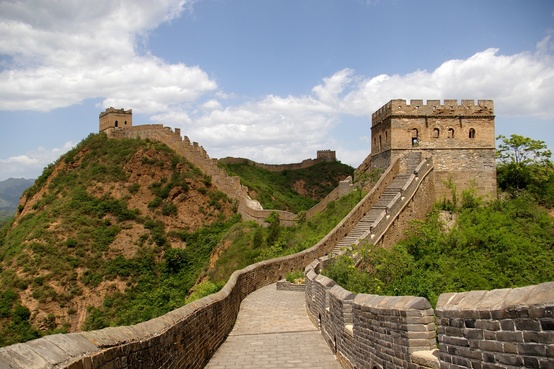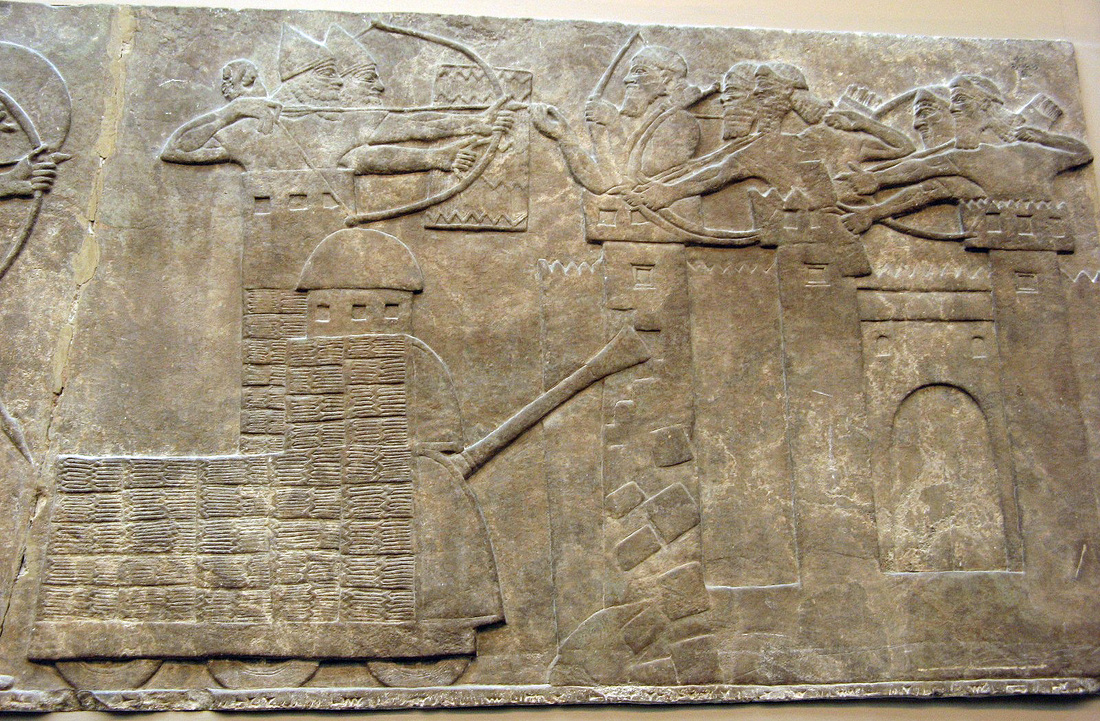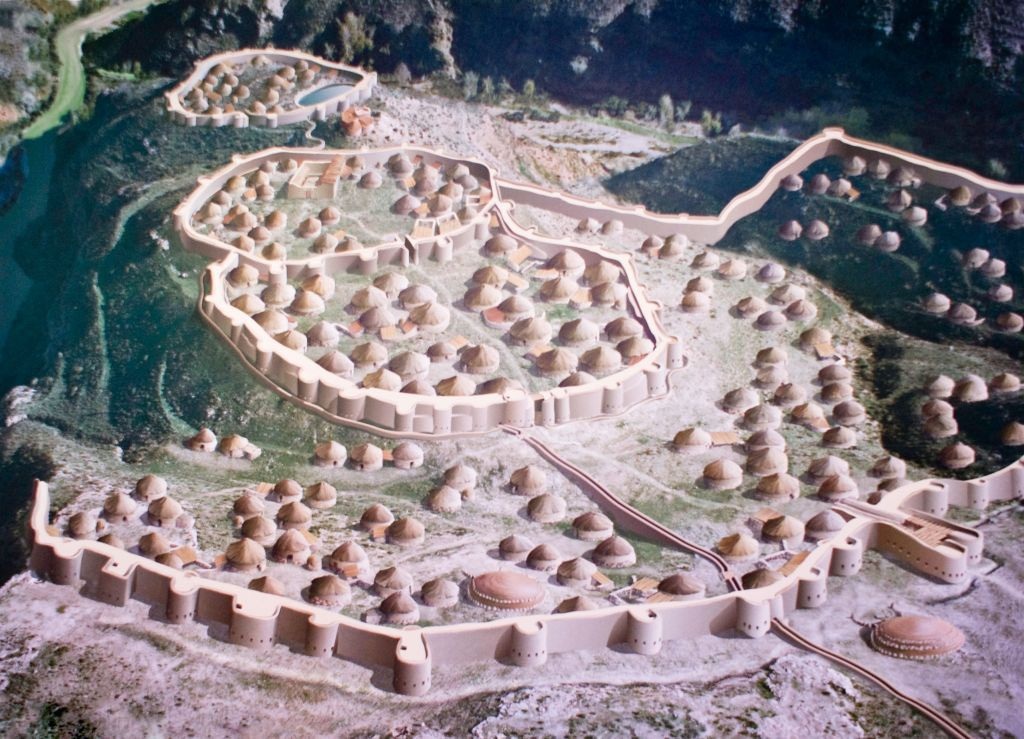 The Great Wall of China: the world's most famous
example of a defensive wall, built during the Zhao dynasty.
The Great Wall of China: the world's most famous
example of a defensive wall, built during the Zhao dynasty.
A necessity for any city that was in danger of invasion or attack, defensive walls are an important part of the history of most ancient cities. Though they are often known as city walls, many were not bound to a single city. A famous example of this would be the Great Wall of China.
Two of the oldest cities that had defensive walls were the ancient Mesopotamian city of Uruk and the city of Jericho that lies on what is now the West Bank. Both of these cities existed as early as 8000 BCE.
The Great Wall of China: the world's most famous example of a defensive wall, built during the Zhao dynasty.Around 3500 BCE in the Indus Valley civilization, there were many small villages behind fortifications of both wood and stone. In about 2500 BCE, the city of Mundinak (which existed in what is now Afghanistan) had defensive walls with bastions.
Some cities had strong enough armies and militaries that the city had little to no need for protection by a defensive wall. A notable example would be Ancient Sparta, which had relatively weak fortifications.
By contrast, Ancient Greece had incredibly strong defensive walls, particularly in Mycenaean Greece. Although it was between 500 and 350 BCE, it is worth pointing out the Long Walls, a long set of parallel stone walls.
Two of the oldest cities that had defensive walls were the ancient Mesopotamian city of Uruk and the city of Jericho that lies on what is now the West Bank. Both of these cities existed as early as 8000 BCE.
The Great Wall of China: the world's most famous example of a defensive wall, built during the Zhao dynasty.Around 3500 BCE in the Indus Valley civilization, there were many small villages behind fortifications of both wood and stone. In about 2500 BCE, the city of Mundinak (which existed in what is now Afghanistan) had defensive walls with bastions.
Some cities had strong enough armies and militaries that the city had little to no need for protection by a defensive wall. A notable example would be Ancient Sparta, which had relatively weak fortifications.
By contrast, Ancient Greece had incredibly strong defensive walls, particularly in Mycenaean Greece. Although it was between 500 and 350 BCE, it is worth pointing out the Long Walls, a long set of parallel stone walls.
Brent Mobbs


